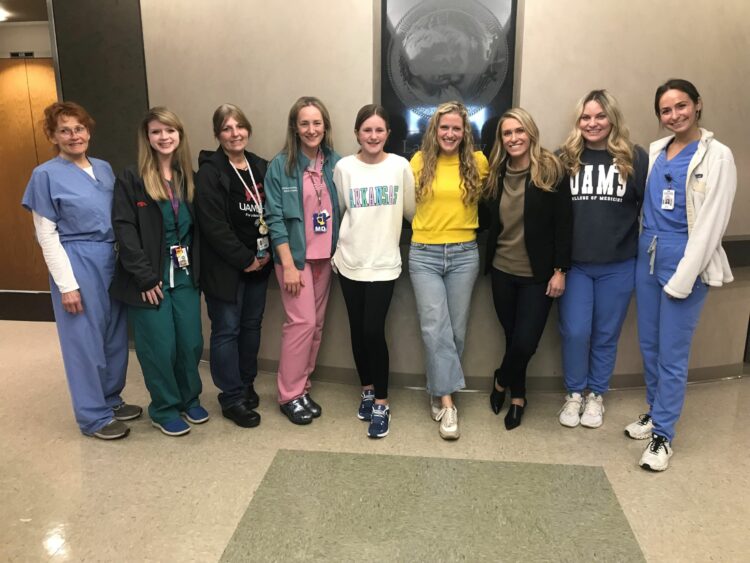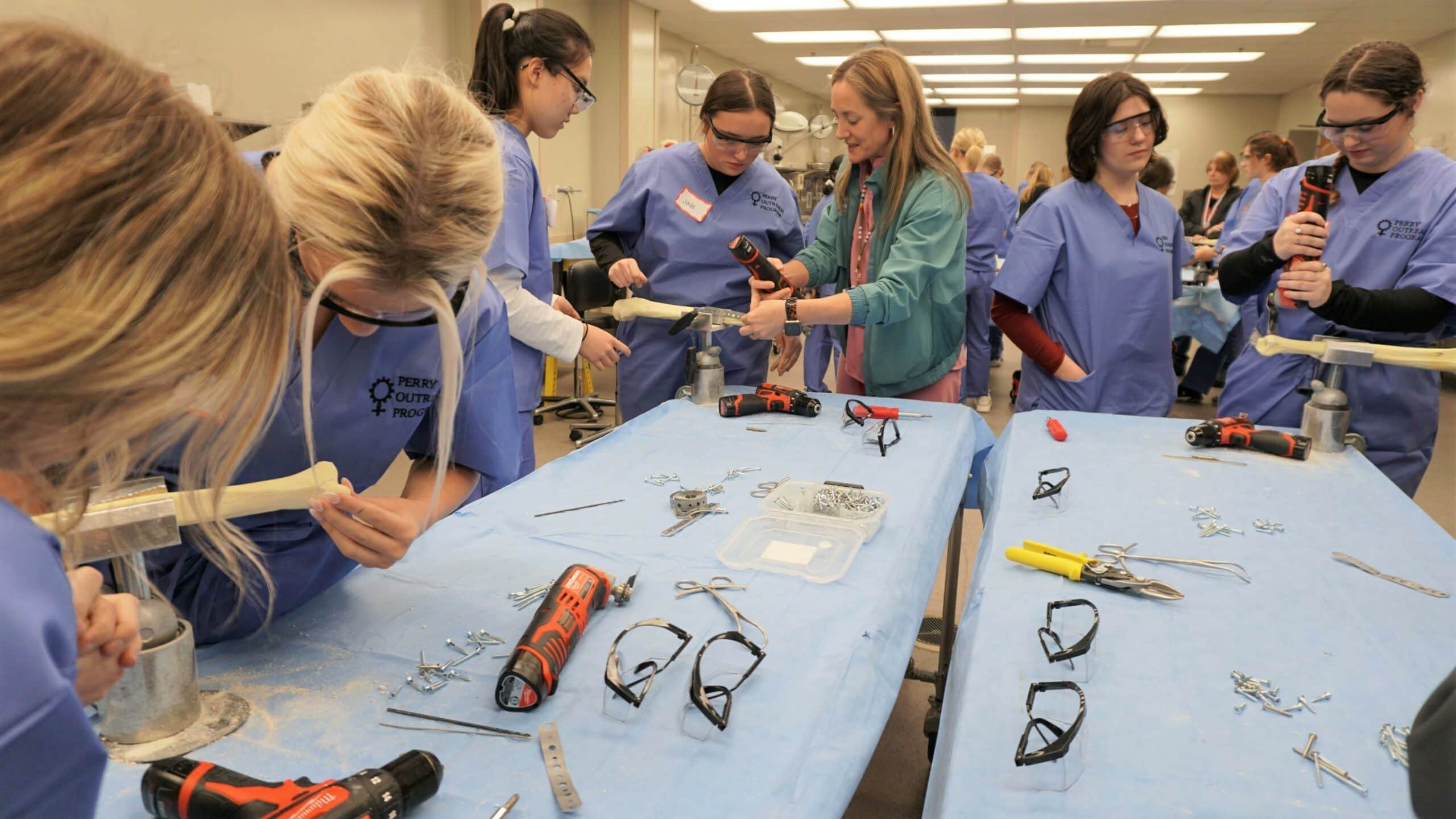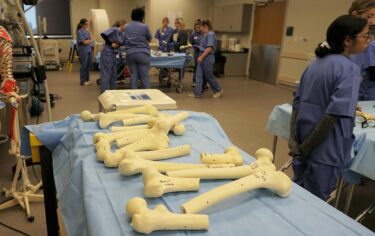Hands-on Program at UAMS Encourages Young Women to Consider Orthopaedics as Career
| Thirty-five female high school students from across the state spent a recent Saturday at the University of Arkansas for Medical Sciences (UAMS), where they learned techniques for repairing bone fractures from a group of female orthopaedic doctors, primarily from UAMS.
Led by UAMS orthopaedic hand specialist Theresa Wyrick, M.D., the hands-on workshop was part of the Perry Outreach Program, a program of the Perry Initiative, a national nonprofit that aims to inspire more young women to become orthopaedic surgeons, engineers and researchers.
Wyrick, an associate professor in the College of Medicine Department of Orthopaedics, noted that while 50% of medical students are women, only about 6-8% of practicing orthopaedic surgeons are women.
“Our goal is for young women to think about orthopaedics and engineering as careers, and the Perry Outreach Program is making a difference, both nationally and here locally,” Wyrick said. “We have women who come out of this program who go to medical school. It has propelled them into careers in medicine and orthopedics.”
The participants learned from the surgeons about the demands of the job, how they balance work and family, and tips for preparing academically.
They also heard about the rewards of the job.
Wyrick talked about a surgery she performs on young children born without thumbs. Her skills enable her to move one of the child’s fingers to where the thumb should be. With the ability to use the finger more like a thumb, such patients have dramatic improvement in their ability to perform the daily activities of life.
In addition to hearing presentations from the surgeons, the students practiced suturing and knot tying on pig feet, and they learned how to apply a cast, practicing on their fellow participants. The students also used surgical power tools on human bone replicas, called sawbones. They drilled holes for pins and rods, drove nails and attached external fixators to repair bone fractures on knees, ankles and femur bones.
“We were right there at their shoulder, but they were doing the work,” Wyrick said. “It was very rewarding to see the girls working so confidently at the end of the day after starting out a bit timid.”
Wyrick, who first volunteered for the Perry Outreach Program 15 years ago, said the experience also helps the young women overcome the idea that the field of orthopaedics requires a macho doctor.
“Some people think you have to be really strong and big and physical to do this work, so we’re just trying to show them that you don’t have to be any of those things,” she said. “If you’re a woman, this is a great career for you, and it’s a lot fun.”

Volunteers at the workshop included Karen Seale, M.D., Meg Cornaghie, M.D., Andrea Rhea, Theresa Wyrick, M.D., Olivia Glover, Chelsea Mathews, M.D., Adrienne Koder, M.D., Madison Stoudt and Callie Margiotta.

